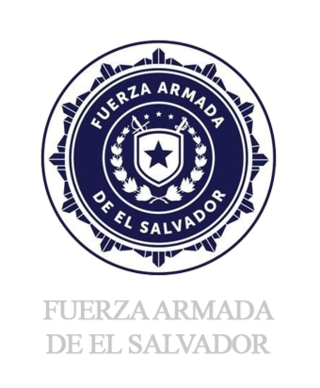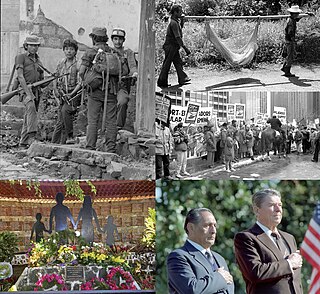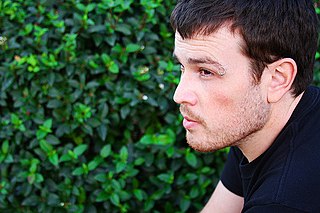
The Armed Forces of El Salvador are the official governmental military forces of El Salvador. The Forces have three branches: the Salvadoran Army, the Salvadoran Air Force and the Navy of El Salvador.

Salvador is a 1986 American war drama film co-written and directed by Oliver Stone. It stars James Woods as Richard Boyle, alongside Jim Belushi, Michael Murphy and Elpidia Carrillo, with John Savage and Cynthia Gibb in supporting roles. Stone co-wrote the screenplay with Boyle.

The Farabundo Martí National Liberation Front is a Salvadoran political party and former guerrilla rebel group.

The Chapultepec Peace Accords were a set of peace agreements signed on January 16, 1992, the day in which the Salvadoran Civil War ended. The treaty established peace between the Salvadoran government and the Farabundo Martí National Liberation Front (FMLN). It was signed in Chapultepec Castle, Mexico.

José Napoleón Duarte Fuentes was a Salvadoran politician who served as President of El Salvador from 1 June 1984 to 1 June 1989. He was mayor of San Salvador before running for president in 1972. He lost, but the election is widely viewed as fraudulent. Following a coup d'état in 1979, Duarte led the subsequent civil-military Junta from 1980 to 1982. He was then elected president in 1984, defeating ARENA party leader Roberto D'Aubuisson.

Roberto D'Aubuisson Arrieta was a Salvadoran military officer, neo-fascist politician, and death squad leader. In 1981, he co-founded and became the first leader of the far-right Nationalist Republican Alliance (ARENA) and served as president of the Legislative Assembly from 1982 to 1983. He was a presidential candidate for 1984 presidential election, losing in the second round to José Napoleón Duarte, the former president of the Revolutionary Government Junta.

The Revolutionary Government Junta was the name of three consecutive joint civilian-military dictatorships that ruled El Salvador between 15 October 1979 and 2 May 1982.

The Christian Democratic Party is a Salvadoran political party. From 2011 to 2012, the party was renamed to Party of Hope before reverting to the Christian Democratic Party. The PDC has been led by Reinaldo Carballo since 2023.
Tenancingo is a municipality in the Cuscatlán department of El Salvador.

The Salvadoran Civil War was a twelve-year period of civil war in El Salvador that was fought between the government of El Salvador and the Farabundo Martí National Liberation Front (FMLN), a coalition or "umbrella organization" of left-wing groups backed by the Cuban regime of Fidel Castro as well as the Soviet Union. A coup on 15 October 1979 followed by government killings of anti-coup protesters is widely seen as the start of civil war. The war did not formally end until after the collapse of the Soviet Union, when, on 16 January 1992 the Chapultepec Peace Accords were signed in Mexico City.

Arturo Rivera y Damas was the ninth Bishop and fifth Archbishop of San Salvador, El Salvador. Msgr. Rivera's term as archbishop (1983–1994) coincided with the Salvadoran Civil War. He was the immediate successor of Archbishop Óscar Romero. During Romero's archbishopric (1977–1980), Rivera was Romero's key ally. He had been the auxiliary of Romero's long-reigning predecessor, Luis Chávez y González (1938–1977). He was also a friend of Mother Teresa, who stayed at his family home on her visit to El Salvador

Jamie Moffett is an American independent motion picture director, producer, and social activist.

During the Salvadoran Civil War, on 16 November 1989, Salvadoran Army soldiers killed six Jesuits and two others, the caretaker's wife and daughter, at their residence on the campus of Central American University in San Salvador, El Salvador. Polaroid photos of the Jesuits' bullet-riddled bodies were on display in the hallway outside the chapel, and a memorial rose garden was planted beside the chapel to commemorate the murders.

The Truth Commission for El Salvador was a restorative justice truth commission approved by the United Nations to investigate the grave wrongdoings that occurred throughout the country's twelve year civil war. It is estimated that 1.4 percent of the Salvadoran population was killed during the war. The commission operated from July 1992 until March 1993, when its findings were published in the final report, From Madness to Hope. The eight-month period heard from over 2,000 witness testimonies and compiled information from an additional 20,000 witness statements.

The final offensive of 1989, also known as the ofensiva hasta el tope, was the major engagement of the Salvadoran Civil War. The battle, fought between the Farabundo Martí National Liberation Front Marxist guerrilla and the Salvadoran government, lasted from 11 November to early December 1989. Sometimes referred to as "Ofensiva fuera los fascistas. Febe Elizabeth vive", in honor of an assassinated union leader, it was the most brutal confrontation in the entire conflict, amounting for seventeen percent of the total casualties in ten years of warfare.
Lil Milagro de la Esperanza Ramírez Huezo Córdoba was a Salvadoran poet and revolutionary leader, a founding member of the first guerrilla organizations that would come together in 1980 to form the Farabundo Martí National Liberation Front (FMLN). She was captured by agents of the National Guard in November, 1976. Her detention was kept secret and from that moment on she was considered "disappeared" until she was murdered inside the clandestine jails of the National Guard on October 17, 1979, after being tortured for three years. She is now remembered for her courage and determination in favor of the unprivileged lower classes.
The 1979 Salvadoran coup d'état was a military coup d'état that occurred in El Salvador on 15 October 1979. The coup, led by young military officers, bloodlessly overthrew military President Carlos Humberto Romero and sent him into exile. The National Conciliation Party's firm grasp on power was cut, and in its place, the military established the Revolutionary Government Junta of El Salvador (JRG). The junta was composed of two military officers and three civilians.

Death squads in El Salvador were far-right paramilitary groups acting in opposition to Marxist–Leninist guerrilla forces, most notably of the Farabundo Martí National Liberation Front (FMLN), and their allies among the civilian population before, during, and after the Salvadoran Civil War. The death squads committed the vast majority of the murders and massacres during the civil war from 1979 to 1992 and were heavily aligned with the United States-backed government.

The Santa Rita massacre occurred near the municipality of Santa Rita in Chalatenango, El Salvador, on 17 March 1982. During the massacre, soldiers from the Atonal Battalion attacked and killed four Dutch journalists and a disputed number of guerrillas from the Farabundo Martí National Liberation Front (FMLN).
The final offensive of 1981, also known as the general offensive of 1981, was the unsuccessful first military offensive conducted by the Farabundo Martí National Liberation Front (FMLN) during the Salvadoran Civil War. The objective of the offensive was to initiate a popular revolution to overthrow the Revolutionary Government Junta (JRG), which had been ruling the country since the 1979 Salvadoran coup d'état. The FMLN hoped that the government would be overthrown by 20 January 1981; the date Ronald Reagan was to be inaugurated as president of the United States.















